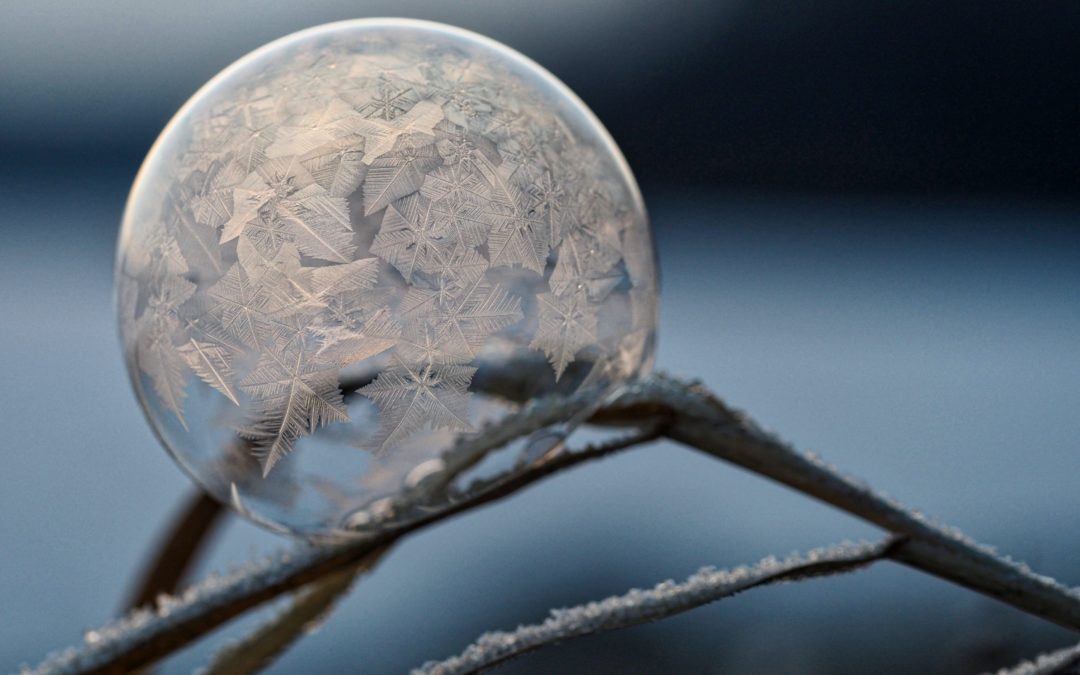For anyone who has suffered depression in the winter months, I feel you.
A few years ago, before I recognized the pattern of my depressive episodes, I sunk deep into a pit of despair every January. It was like clockwork.
First, I’d be hypomanic–eager and willing to take on several huge, time-consuming projects (and not be able to do them). I’d stretch myself thin crafting homemade Christmas presents of varying quality, churning out crafts at an unsustainable rate.
I’d run around like a chicken with my head cut off making gaudy decorations, slapping ill-fitting hats together out of cheap fabric, and cross-stitching my fingers bloody.
Come January, when winter kicked in and after the noise, fuss, and good feelings of the holidays were over, I’d find myself crashing, and crashing hard. I’d end up self-isolating, buried in my blankets, and neglecting to shower off the crust of a day spent entirely in bed.
Depression sucks, and during the winter, when the sun disappears behind snow clouds, depression tends to rear its ugly head for a lot of people. Seasonal affective disorder (SAD) is a subtype of major depressive disorder and bipolar disorder, and according to a 2018 systematic review, SAD is responsible for 10-20% of recurring depressive disorders.
SAD works (or rather, doesn’t work) based on light exposure. Up to 9% of people in the U.S. suffer from SAD, depending on where they live; northern climates get less sun, so people in New Hampshire suffer more from SAD than those in, say, Florida.
But even when I lived in Arizona, arguably one of the sunniest states, I would crash hard in January and not feel remotely better until July.
I feel awful for my then-young son, who dealt with a mother who refused to engage. I still have a video wishing him happy sixth birthday on my phone, a video that I took from bed because I couldn’t get up after picking him up from school, a destructive pattern.
He looked so cute in his birthday crown from his first-grade class. “Isn’t it nice that it’s my birthday today?” he asked, cheerful and trying to get me to actively share his life.
I was so depressed, all I could muster up was a yawn and a half-hearted, “Yes, that is nice.”
I suffered this manic-depressive pattern for about 15 years before I realized, no, Cass, you don’t have to be depressed every New Year’s Day!
Wising up, I talked to my psychiatrist, who prescribed me bupropion, an antidepressant known to treat SAD. (That wasn’t initially why he prescribed it to me, but it was a cool bonus!)
I also started taking vitamin D religiously. Living in the Pacific Northwest, the weak winter sunlight up here meant that my body was struggling with a vitamin D deficiency.
And finally, my husband invested in a SAD light for me. As of this writing, I’m sitting in front of it, soaking in the ridiculously bright lumens (a measure of light intensity).
I love my SAD light. Absorbing its potent therapies for an hour a day helped me get through last winter relatively unscathed, and it will help me get through this one, too.
After ensuring that I wouldn’t go manic on the antidepressant, the clouds began lifting. I could breathe again. I could engage happily with my child. I even expanded my family, a decision that took a lot of work to ensure I would be able to safely handle a new baby.
One thing’s for sure: now that I’ve recognized the pattern of my SAD and have taken steps to rectify it, I would never go back to that soul-sucking pit of despair.
And neither do you.
If you find yourself inexplicably depressed every New Year, you’re not alone. It’s a possibility that you’re suffering from seasonal affective disorder.
Talk to your doctor today about investing in a bottle of vitamin D and a SAD light. A light therapy lamp is about $40 on Amazon and is well worth the effects.
You may also need an antidepressant and there’s no shame in that. A boost in your mood and the ability to stop depression in its tracks is worth conquering internalized stigma, in my opinion.
You can break the pattern as I did. You don’t have to be SAD.
I wish you well in your journey.
Related Posts
Top Tips for Surviving the Holidays with Bipolar Disorder ·
My Manifestations of Bipolar Disorder: Crafting and Frugality ·
Do You Have Bipolar Disorder? You Can Still Thrive This Holiday Season
The content of the International Bipolar Foundation blogs is for informational purposes only. The content is not intended to be a substitute for professional medical advice, diagnosis, or treatment. Always seek the advice of your physician and never disregard professional medical advice because of something you have read in any IBPF content.


